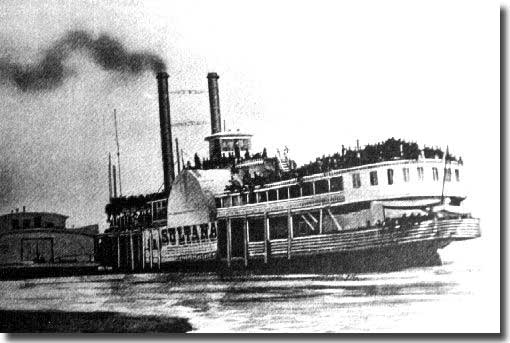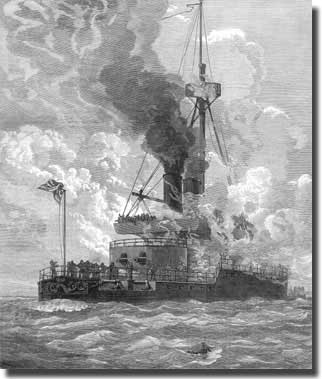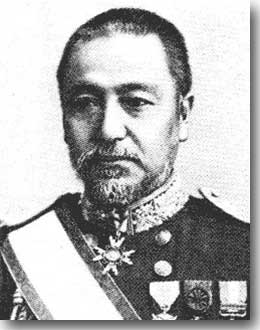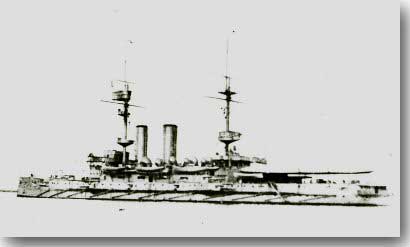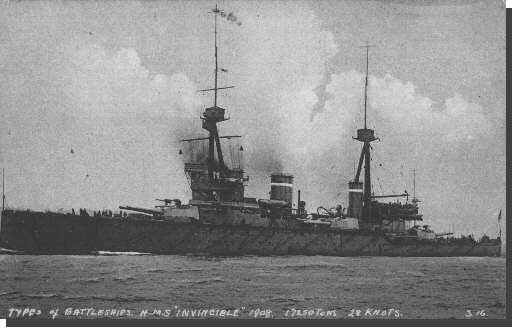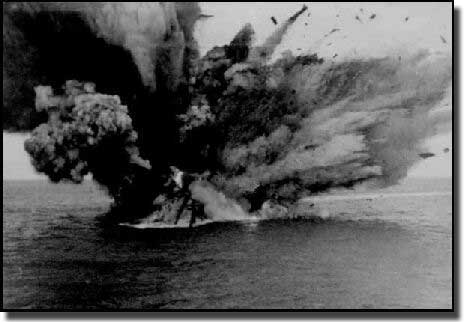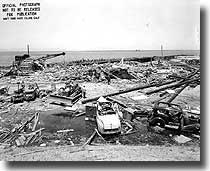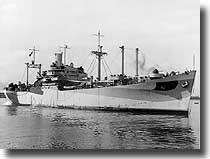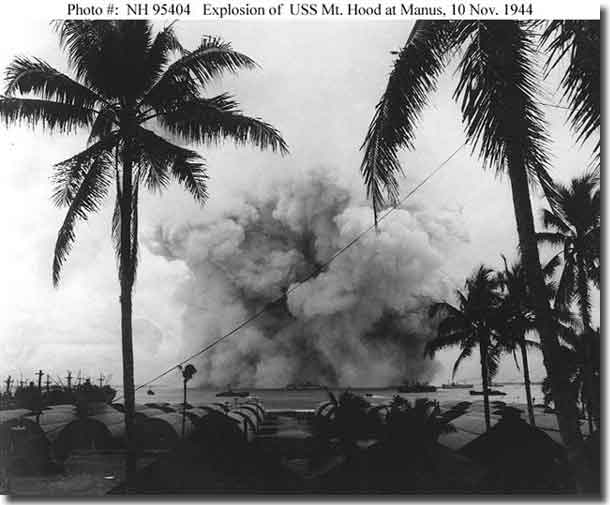|
Over the Years, Naval and Merchant Ships Explode. Some of these accidents are visited.
Introduction. In the 19th. Century. 1. CSS Chattahoochee explodes in 1863. This Southern Civil warship, whilst ploughing the waters of Georgia, suddenly, on the 27th. of May in 1863 suffered a boiler explosion, as a result 18 died. She was taken to Columbus, and was later scuttled. 2. The steamboat Sultana destroyed in the Mississippi River in 1865. Sultana was crammed to overflowing with almost 2,000 people, mostly Union soldiers being returned home to the North after their recent release from Confederate prisons. The Government paid the ship owners, $5 for each enlisted man, and $10 for each Officer their ship carried, this payment tended to encourage ship owners to try and extract the very last $ for themselves by overloading their vessels. Something close to 2,000 passengers and crew, 60 horses, mules, and 100 hogs, all fought for a little space in the ship late in April 1865. Early in the morning of the 23rd. Sultana's boiler blew up, starting a fire, and casting people and animals into the dark reaches of the Mississippi River. In all, 1,238 died that fateful morning. A subsequent trial lasting five months held her Captain, Frederick Speed responsible and was dismissed from the Confederate Navy.
Steamboat Sultana, her boiler exploded 27th. April 1865, and 1,238 died. Naval Ships Explode. 3. HMS Thunderer blows up in 1879. The British Battleship HMS Thunderer, in Stokes Bay had her boiler blow up on the 14th. of July 1879, leaving 40 dead including her Captain. An earler accident in January of the same year had been caused when a 12 inch gun in one of her gun turrets exploded whilst the ship was in the Sea of Marmora, 11 died then with another 35 wounded.
HMS Thunderer boiler explosion kills 40, 14th July 1879. 4. USS Maine explodes in Havana Harbour in 1898. This US warship whilst in Havana Harbour, on the 15th. of February 1898, had 5 tons of powder intended for the Battleship's six and ten inch guns explode. The forward 1/3 of the ship was destroyed, and 260 sailors died. The cause of the explosion was suggested as ( a ) spontaneous combustion or ( b ) a detached fire in her coal bunkers, which caused the forward and adjacent powder magazine to detonate. ( c ) A mine may have been placed against the hull, causing the magazine to blow up. A four week Board Inquiry decided a mine had been detonated below the ship, but could not decide how, or by whom it was placed. 5. Japanese Battleship Mikasa blows up in 1905. On the 10th. of September 1905, Admiral Togo's flagship, the battleship Mikasa, when docked at the Sasebo Naval Base suddenly blew up and sank, taking 251 of her crew with her. The cause of this mishap was never ascertained.
Admiral Togo's flagship Mikasa blew up on the 11th. of September 1905, 6. French Battleship Libert destroyed by explosion, 1911. The French Battleship Libert, on the 25th. of September 1911, whilst in Toulon Harbour, had a gun magazine explode, killing 285 sailors. 7. Royal Navy Battleship HMS Bulwark blows up at Sheerness, 1914. Whilst loading ammunition at Sheerness on the 26th. of November 1914, HMS Bulwark, a British Battleship, was destroyed via a huge explosion, thought to have been caused by the mishandling of black gun powder. Only 12 from her company of 750 survived.
HMS Bulwark, destroyed by an ammunition explosion in November 1914, only 12 sailors survived. 8. French Battleship Bouvet explodes, 1915. On the 18th. of March 1915, as part of the Allied Naval force bombarding Turkish gun emplacements in the Dardenelles area, the French Battleship Bouvet was hit by a shell in one of her magazines, with a might roar she exploded, in two minutes had sunk and 640 of her crew were taken to the bottom with their ship. 9. British Battle Cruiser Invincible blows up in 1916. At the battle of Jutland, the first British Battle cruiser HMS Invincible, failed to live up to her name when, on the 31st. of May in 1916, an explosion in her magazine, sparked by an incoming German shell caused the ship to blow up. Only 6 of her crew survived from the total of 1,032.
A 1908 photo of HMS Invincible, destroyed at the Battle of Jutland when a magazine blew up. 10. HMS Vanguard exploded at Fleet Base of Scapa Flow in 1917. 11. HMS Barham disappears in Mediterranean 1941. On the 25th. of November in 1941, the old British Battleship HMS Barham was struck by three torpedoes fired from U-331. She suddenly rolled to port, the after magazine exploded, and in moments she had gone, sunk, to take over 60% of the crew with her. There, one moment, gone the next. This photograph of her exploding is one of the most dramatic ever taken of the "War at Sea."
British Battleship disappears after a magazine blows up. 12. Old US destroyer Campbeltown rammed into dock gates at St Nazaire, 1942. In the Commando raid on the port of St Nazaire on the 28th. of March 1942, the old US destroyer Campbeltown, was filled chock a block with high explosives, and deliberately rammed into the dock gates and detonated, the object being to deny the German Navy access to the only dry dock capable of accepting the Tirpitz.. 400 Germans died as a result of this explosion, and the dry dock was out of action for the remainder of WW2. 13. USS Forrestal accident 1967. The USS Forrestal operating in the Gulf of Tonkin on the 29th. of July 1967 had aircraft carrying rockets, ready to launch on her flight deck, one rocket was fired accidentally. It scorched along the flight deck, hit a drop tank full of petrol, exploded, the resultant fire killed 134 sailors, and destroyed 63 aircraft. 14. Russian nuclear submarine Kursk sinks after an explosion in 2000. On the 12th. of August 2000, the Russian nuclear Submarine Kursk, sank in the Barents Sea after an explosion on board, and 118 officers and crew perished. Some Merchant ships explode. 15. Mont Blanc destroys Halifax in 1917. On the 6th. of December 1917, the French ammunition ship Mont Blanc collided in Halifax Harbour with the Norwegian ship Imo, the resultant explosion, when the French ship just disintegrated, killed about 2,000, and laid waste to the city of Halifax. 16. The Freighter SS Fort Stikine devastates Bombay Harbour 1944. On the 14th. of April in 1944, the freighter SS Fort Stikine, a 7,130 ton coal burner loaded with 9,000 bales of cotton, plus 1,395 tons of ammunition. In addition, she also carried 24 bars of gold, valued at $1,832,000, bound for London, and designed to help stabilize the Indian Rupee. The cotton bales caught fire, there was no red flag flying in the ship to signify she carried a dangerous cargo of ammunition, at 1606 ( 4.06 PM ) the forward section of the ship erupted with an explosion, immediately killing hundreds of on lookers, and 66 of the Bombay Fire Brigade who were attempting to control the fire onboard. The explosion launched burning cotton bales as if they were skyrockets taking off, and the 24 gold bars were cast both into the harbour and ashore. Immediately a spate of fires were set off in the adjacent dock buildings and slums. 300 acres were soon well alight, and in another 34 minutes, 784 tons of munitions aft blew up. 17 ships in the harbour were badly damaged, and the number who perished in the fires were reported between 336, and 1,376, and some reports put the carnage as high as 6,000 dead, with 500, hospitalised. Most of the gold was quickly recovered, but in 1970, a further 2 bars were found during a routine harbour dredging operation. 17. Huge Port Chicago fire 1944. On the 17th. of July in 1944, ammunition ships E A Bryan and Quinalt Victory were alongside a loading wharf at Port Chicago, Mare Island in California. The former vessel was loaded with 5,000 tons of explosives, and at 2018 ( 8.18 PM ) a fire started in E A Bryan, in 6 seconds an incredible explosion detonated, ripping the ship into small shreds, some catapulted thousands of feet skywards. This explosion was felt as far away as Boulder City in Nevada, it also destroyed Quinalt Victory. I believe that 10,000 tons of munitions went skywards that day. 320 sailors died, 390 more injured. 202 of all those who died were African Americans. See the Parade Magazine article from 6 February 2005, "Isn’t It Time To Right The Wrong?"
Damage caused by Port Chicago explosion July 1944. Chicago Mutiny. Port Chicago was only out of commission for about a month, when it had been repaired so that the necessary ammunition and explosives could continue to flow and feed the needs of the Pacific War. 18. Ammunition ship Mount Hood blows up at Manus, 1944. On the 10th. of November 1944, at the huge US Naval Base at Manus, sitting almost on the equator in the Pacific Ocean, the Mount Hood an ammunition ship disappeared after a massive blast, with 45 dead, and 327 missing, plus another 371 injured.
USS Mount Hood, prior to the explosion that destroyed her. USS Mount Hood disappears from the explosion that destroys her on the 10th.of November 1944. Conclusion. But, one can only think that carelessness had a large part to play in some of these disasters, that claimed so many young lives. |

